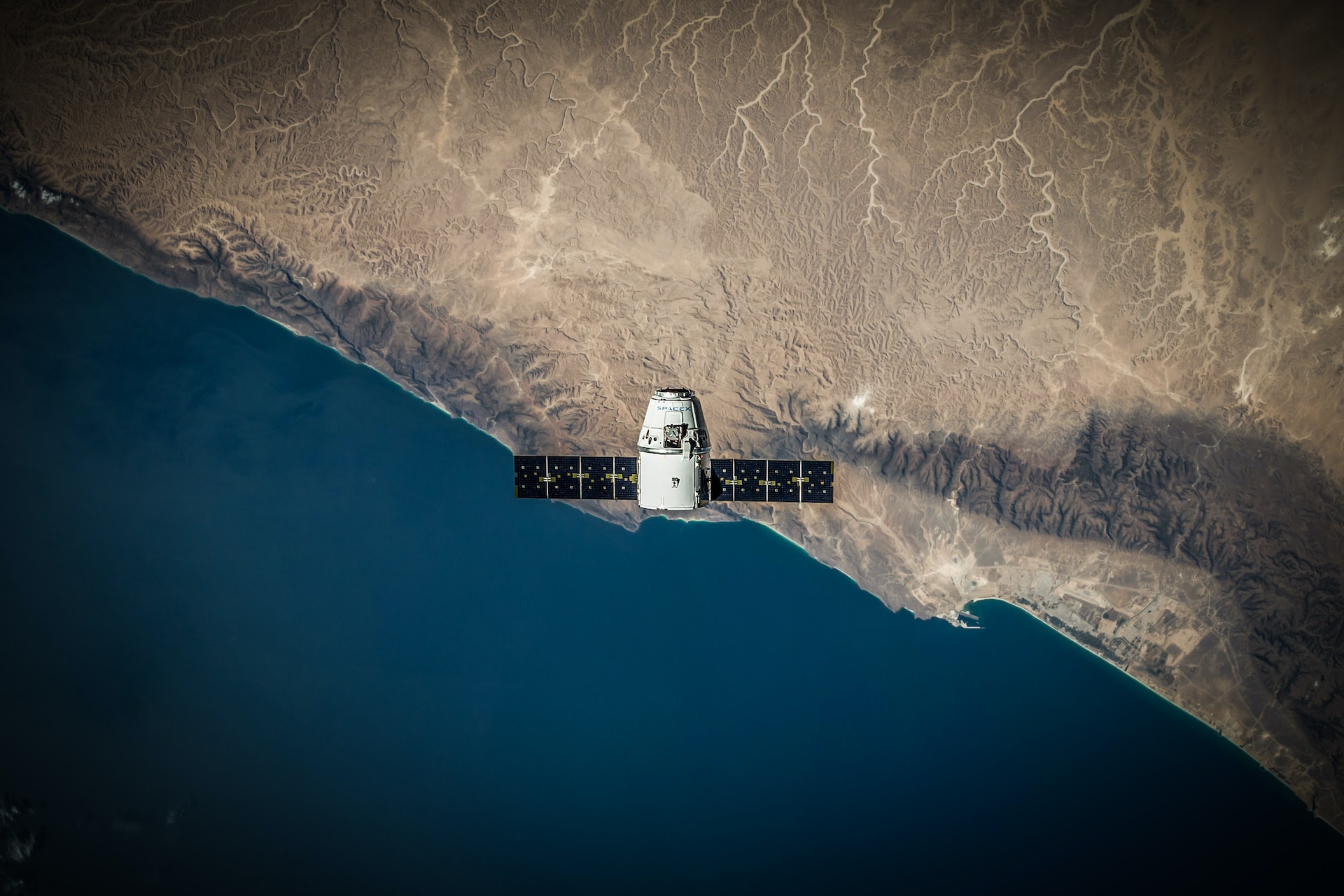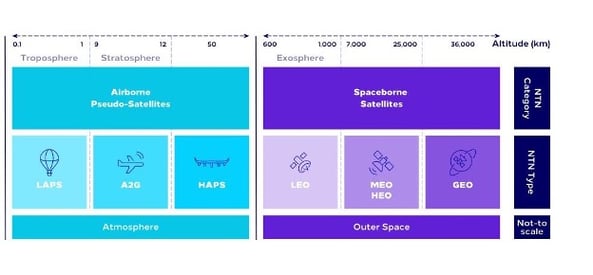
Introduction
With the fast development of emerging technology trends such as the Large Learning Model (LLM) based Artificial Intelligence (AI) and the new generation of applications that leverage it, traditional terrestrial networks are increasingly unable to provide connectivity for use cases that take place in areas without reliable mobile or fixed connectivity. The use cases involve aviation, maritime, and for example agriculture in areas with insufficient user base to justify the roll out of traditional fixed and/or mobile networks.
Additionally, there are also situations where the traditional network infrastructure is vulnerable to events that interrupt the user communications. These may involve natural disasters such as earthquakes, or various human-induced situations such as acts of war. In all these scenarios, being able to utilize a form of connectivity that is not dependent on terrestrial communications can play a key part in sustaining the daily activities that are critical to our societies.
In recent years, with the development of Low Earth Orbit (LEO) connectivity models, satellite technologies have made considerable progress in commercial, civilian, and military services. These technologies are based on miniaturized, economical next generation of satellites that orbit considerably closer to the Earth than the traditional high orbit satellites.
As it stands, several countries have launched major LEO satellites projects, such as OneWeb, SpaceX Starlink, and O3b. The latest news also indicate that SpaceX and Microsoft have partnered up to provide global communication services together using SpaceX ‘s LEO connections and Azure clouds designed for Multi-Access Edge Clouds (MEC). Additionally, also Amazon has its own LEO program called Project Kuiper, which aims at building a low Earth orbit (LEO) satellite constellation composed of 3,236 satellites.
As the LEO market continues to grow, the technology combination of Low Earth Orbit (LEO) Satellites, Non-Terrestrial Networks (NTN), and Multi-Access Edge Clouds (MEC) have the potential to extend high speed internet, mobile communications access, and the emerging AI-enabled applications to the remotest corners of the globe.
What are Low Earth Orbit (LEO) Satellites?
Low Earth orbit (LEO) satellites are objects that revolve around the earth at lower altitudes than satellites in geosynchronous orbits. An LEO satellite is usually a piece of electronic equipment with a dedicated communications or imaging function. As such, low Earth orbit satellites are typically deployed as part of a communication network, for military reconnaissance, espionage, or other applications requiring imaging or data relays.
A low Earth orbit is generally considered as one that operates between 2,000 and 200 kilometers above the planet surface (approximately 1,491 miles to 300 miles). Beyond this 2,000 kilometer range are medium earth orbit (MEO) satellites, and geosynchronous or geostationary Earth orbit (GEO) satellites, which have a circular orbit at 35,786 kilometers above the Earth's equator.
All these satellite variants can contribute to the implementation of communications networks. However, LEO satellites are not fixed in space in relation to the planet's surface. This means they can provide faster data throughput and less latency than traditional geostationary (GEO) satellites, as they orbit over 60 times closer to the Earth's surface. Observational satellites in low Earth orbit can also resolve smaller subjects with greater detail.
From a deployment cost perspective, LEO satellites are generally less expensive to place than geosynchronous ones, as they require a great deal less rocket power. However, Low Earth orbit satellites must travel through a much denser atmosphere, where they experience a greater degree of aerodynamic drag. LEO satellites therefore require more power to travel at higher speeds and make corrections to maintain their lower orbits.
Due to their shallow orbits, LEO satellites must orbit the Earth many times a day, and individually have a much smaller field of communication with the surface than a satellite at higher altitude. What this means in practice is that groups of LEO satellites typically need to work in concert, for certain applications. Such a grouping of low Earth orbit satellites is known as a constellation.
With their faster throughput and reduced latency, LEO constellations can provide satellite broadband service to areas where it would otherwise be too costly to lay land lines – or even impossible, due to surface conditions. For example, a flagship project of the ill-fated OneWeb was a plan to extend broadband internet access to regions in the Arctic.
Non-Terrestrial Network (NTN) Architectures
As they circle the planet, a network of low Earth orbit satellite nodes can provide continuous coverage, by communicating with Earth-bound transmission stations.
A Non-Terrestrial Network or NTN combines Earth-bound infrastructure with space-borne and aerial communication nodes, with the potential to provide connectivity to locations anywhere on the planet.
Besides LEO, MEO, and GEO satellite constellations, NTNs may include a few other constituents. Among these are High Altitude Platform Systems (HAPS), which are radio stations located on an object that floats at the stratosphere layer, and Low Altitude Platforms (LAPS), which are typically drones or balloons with the ability to fly at altitudes of a few hundred meters or less. Two-way Air to Ground (A2G) communication between aircraft and stations or locations on the surface of the Earth may complete the picture.

[Image source: Communications, Space, and Technology Commission]
The Role of Multi-Access Edge Cloud (MEC)
Standards are currently in place to bring low Earth orbit (LEO) satellites into the 5G cellular network. For example, the 3GPP Release 17 standards now support direct connection between 5G cellphones and satellites. Going further, the 3GPP has identified a set of 5G frequency ranges in the n256 and n255 bands to allow future 5G handsets to stay connected using both terrestrial mobile networks and non-terrestrial satellite networks.
5G technology can provide higher speed and capacity with lower latency than the previous 4G LTE networks. However, processors must move closer to the mobile edge network for data processing to take advantage of these speed and latency gains.
Multi-access edge computing (MEC) network architecture provides cloud computing capabilities and an IT service environment at the edge of the network. With data being processed closer to the end user, MEC provides reduced latency, efficient network operations and service delivery, leading to an improved user experience.
FusionLayer is a key element of the emerging multi-access edge cloud (MEC) and 5G infrastructure that will be used to run the Artificial Intelligence and other Metaverse applications that will provide the immersive user experience of tomorrow. FusionLayer’s key role is to ensure these applications have an infrastructure in place they can run on reliably and efficiently.
 Login
Login



Reply a Comment